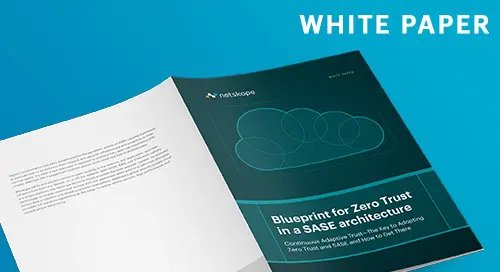To be effective in today’s cloud-first, increasingly mobile and distributed environments, zero trust solutions must blend a wide array of capabilities and technologies, from Multi-Factor Authentication (MFA), to Identity and Access Management (IAM), to encryption, to scoring, to file system permissions and more.
Netskope’s ZTNA Next solution is specifically designed to support diverse environments as a cloud-native ZTNA platform. It combines comprehensive access policy management, compliance assessment, integration with existing IAM and security information and event management (SIEM) solutions; and it supports any application, and any protocol – to simplify network and security operations.
The solution also provides extended protection through integration with the Netskope Next Generation Secure Web Gateway (NG SWG), which comprises several integrated cloud-native technologies, including an inline CASB, data loss prevention (DLP), SWG, and advanced threat protection (ATP).
This integration provides unique and unified visibility and protection of hybrid-cloud environments and enhances latency-sensitive security functions such as DLP and ATP. For example, users will be able to safely use ChatGPT and other generative AI apps due to Netskope’s real-time coaching, data protection, and application activity controls.
Simply put, Netskope’s ZTNA Next provides a next-generation approach to ZT accessibility, for any application, in any environment.
Meet our foundational element of Netskope One: Zero Trust Engine




 Back
Back




















